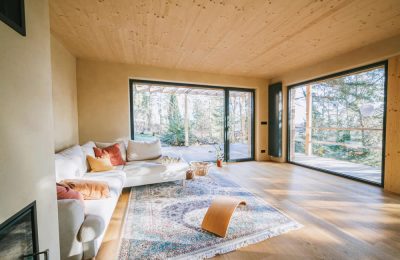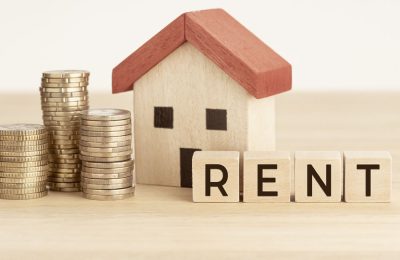One of the most common questions a landlord will ask a letting agent is “What type of property should I buy to let out in the private rented sector?” Before we answer this question it is important to understand your target market. This means to be able to distinguish between different types of tenants and to know what each tenant type is looking for when selecting a property.
Tenant type:
- Young professionals/employed candidates. These are typically single people, couples or two friends sharing. They are typically looking for low maintenance properties either in the town or city centre or close to good transport links.
- Families typically look for larger properties with multiple bedrooms, close to a good school, parks and amenities. They are typically looking for family friendly areas.
- Students will typically look for a fully furnished, HMO licensed property situated in close proximity to their place of study. They prefer shared accommodation to reduce their costs and the property will ideally be close to amenities and public transport links.
- Retirees typically look for an easily accessible property like a bungalow, or a complex that has lift access. They often look for a retirement village or relatively quiet areas to reside.
- Unemployed or low income families are most likely to search for a home with a housing association or a home that has a mid-market rent, in a family friendly area close to schools, parks and amenities.
- Foreign nationals have to prove they have the right to rent and have to have a national insurance number from the home office. They typically look for low maintenance properties either in the town or city centre, or close to good transport links or family homes near a good school and amenities if they have children.
Now that you understand the different types of tenants it is easier to pick a property suitable for the types of tenants you are trying to attract. The target market for a 1-2 bed property is single people, couples, two friends sharing, retirees or a couple with a child. The nature of this client group can be quite transient and these types of properties tend to turn over tenants quicker, which means more void periods, cleaning/redecoration and marketing fees for a landlord. For example, a single person may become a couple and move in with their partner. A couple may have a child and move into bigger premises. If you buy a 3-4 bedroom property near a good school the target market would be families. This client group is the least transient and most long-term tenant group. School catchment area is a big consideration for tenants in this category and they are less likely to move as they do not want to come out of the school catchment area. Families can stay for years so there will be minimal voids and re-marketing costs. Families also want to do a bit more to their rental property as they want to make it their home. For example, they may wish to decorate their child’s bedroom at their cost or request permission to decorate to their tastes.
It is important to understand that there are different occupancy rates in different areas. For example, in a busy city like Edinburgh, properties tend to go very quickly as there is high demand for property and tenants know they need to move quickly to secure the property. In busy towns with lots of local amenities such as shops, restaurants, sports centres and so on, the occupancy rates are not as high or as fast as they are in a city, but properties do still let out relatively quickly as there are lots of things that attract tenants to these areas. Smaller, more rural towns tend to have the lowest occupancy rates. In these small areas there is perhaps only one town shop, so there is not much that would entice people to live there. In fact, some residents in these smaller areas would move to a bigger town or city where amenities are more readily accessible.
Comparing Property Types: Turnover, Profitability and Tenant Stability
If you purchase a one or two bedroom property you may be lucky and get a long-term tenant but the likelihood is that these properties will turn over more frequently than larger properties due to the tenant types that they attract. For a landlord this means more void periods while the properties get cleaned and repaired for re-let, more frequent cleaning and repairs, and more frequent re-letting costs. This reduces the cash flow and profitability when compared over a 5-10 year period with a 3-4 bedroom house. If you buy a larger property near a good school, the likelihood is that you will get a nice family to move in that will live in the property for years. They do not typically move too much as they need to remain in the catchment area for the schools. Typically families ask for less repairs as they tend to do minor maintenance themselves and they may carry out their own redecoration of the property.
If you purchase a larger property and get a HMO license then typically it should be near a university or in an area of high demand for HMO’s. The licensing can take a while and varies per local authority. This can be a very lucrative strategy as you can charge a room rate which is typically higher across the full property than you would get in a similar sized property without an HMO license on the open market. The only downside of HMO’s is the tenant turnover is quite high and the wear and tear on these types of properties is typically higher than average when compared to non HMO residential properties.
All of the options above can lead to a “hands off” management approach. As long as the tenants pay their rent and do not damage the property there should be little involvement with the landlord.
Another option would be to purchase a residential property with the view of applying for a short term letting license. This is a completely different strategy. This is a very time consuming, hands on approach and should be considered as hospitality, rather than private rented sector letting and advice should be sought from people in the hospitality sector.
Things that tenants also appreciate is parking, nice gardens and garages. If the property is near good transport links or near lots of local amenities.
So once you have found the type of property you would like to buy, you then need to look at the numbers and see if they work before you make an offer to purchase the property. Things to take into consideration are:
- Is the property discounted from the home report value?
- What is the rental yield?
- What is the ADS amount?
- How much will the refurb/compliance cost?
- How much for buildings, contents and rent guarantee insurance?
Always take advice from professionals in the field before buying anything as they may bring other factors to your attention that you may not have considered. We wish you luck on your property journey.











